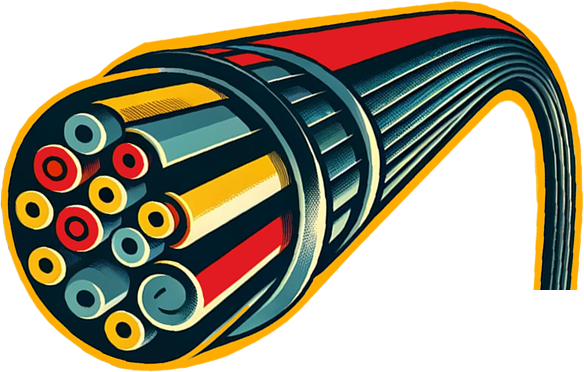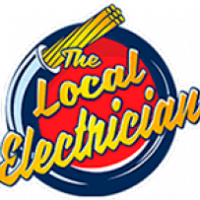Power Factor Correction – Tired of seeing high electricity bills each month and wondering how to reduce them? Power factor correction might be the answer you’re looking for.
Understanding and improving your power factor can lead to significant energy savings and more efficient use of electricity. In this blog, we’ll explore what power factor correction is, why it matters, and how you can improve it for better energy efficiency.
What is Power Factor Correction?
The answer might be related to something called power factor correction. But what exactly is power factor correction?
Power factor is a measure of how effectively your electrical equipment uses electricity. It’s a ratio between the actual power used to do work (like turning on lights or running appliances) and the total power supplied by the utility company. If the ratio is high, it means your electrical system is using power efficiently. But if it’s low, a lot of electricity is being wasted.
Imagine you’re filling a water balloon. If you aim perfectly, all the water goes into the balloon. That’s like a high-power factor. But if your aim is off and water spills everywhere, that’s like a low power factor. The electricity is being supplied, but it’s not all being used effectively.
A low power factor can happen because of various reasons like the type of equipment you use. Things like motors and transformers can cause inefficiencies.
Correcting the power factor means making adjustments so your electrical system uses electricity more efficiently, just like improving your aim to get more water into the balloon and less on the ground.

How Power Factor Correction Works
Mechanisms of Correction
Power factor correction works by adjusting the electrical system to better match the power supply with the power demand.
This can be done using different methods, such as adding capacitors or other equipment that help to align the power supply more closely with the actual power usage.
By doing this, it reduces the amount of wasted electricity and improves the overall efficiency of the system. Think of it as fine-tuning your system to make sure it runs as smoothly and efficiently as possible.
Types of Power Factor Correction Equipment
There are several types of equipment used for power factor correction:
- Capacitor Banks: These are the most common and cost-effective methods. They work by storing electrical energy and releasing it when needed to balance the load.
- Synchronous Condensers: These are similar to capacitors but are more efficient for large power systems. They help improve the power factor by providing reactive power to the system.
- Phase Advancers: These are used primarily with induction motors to improve their power factor. They adjust the phase angle of the power supply to match the motor’s needs, reducing inefficiencies.
Causes of Poor Power Factor
Inductive Loads: Motors, Transformers
Inductive loads, such as motors and transformers, are major contributors to a poor power factor. These devices require more power to operate, which can lead to inefficiencies.
When these loads are present in your system, they cause a lag between the voltage and current, leading to wasted energy.
This lag occurs because inductive loads store energy in magnetic fields, causing delays in current flow. Addressing these inefficiencies through power factor correction can help improve your overall power factor and reduce energy waste.
Non-linear Loads: Rectifiers, Harmonics
Non-linear loads, such as rectifiers and devices that create harmonics, also negatively impact the power factor. These devices distort the current and voltage waveforms, making it harder for the power system to operate efficiently.
This distortion can cause additional stress on the electrical system, leading to further inefficiencies and potential damage to equipment.
Harmonics, in particular, can create heat and vibrations, which can shorten the lifespan of electrical components. By identifying and correcting these issues, you can improve your power factor and enhance system performance.
Methods of Power Factor Correction
Capacitor Banks
Capacitor banks are widely used because they are simple and cost-effective. They store electrical energy and release it when needed to help balance the load and improve the power factor.
By doing so, they reduce the amount of wasted electricity and help the system run more efficiently. Capacitor banks are typically installed at various points in the electrical system to provide localized correction. This method is especially useful for systems with a high number of inductive loads.
Synchronous Condensers
Synchronous condensers are more efficient for larger systems. They work similarly to capacitors but can handle higher loads and provide better stability for the power system.
These devices are particularly useful in industrial settings where large amounts of reactive power are needed.
Synchronous condensers can also help improve voltage regulation and reduce fluctuations in the power supply. Their ability to adjust dynamically to changing loads makes them ideal for complex systems.
Phase Advancers
Phase advancers are used with induction motors to improve their power factor. They adjust the phase angle of the power supply to match the motor’s needs, reducing inefficiencies.
This can lead to significant energy savings and improved performance of the motor. By optimizing the phase angle, phase advancers help reduce the reactive power demand of induction motors.
This method is particularly beneficial for facilities with a high concentration of induction motors, such as manufacturing plants.

Key Benefits of Power Factor Correction
Improved Energy Efficiency
One of the main benefits is improved energy efficiency. By using electricity more effectively, you can reduce waste and lower your overall energy consumption. This not only saves money but also helps conserve valuable resources.
Efficient energy use means that less energy is needed to perform the same tasks, which can also lead to less strain on the power grid. Overall, improving energy efficiency is a win-win situation for both your wallet and the environment.
Reduced Electricity Bills
Better efficiency means lower electricity bills. Power factor correction can help you save money by reducing the amount of wasted power.
This can lead to substantial savings over time, especially for businesses with high energy usage. By optimizing your power factor, you ensure that you are not paying for electricity that is not being effectively used.
These savings can then be reinvested into other areas of your business or household needs, making it a cost-effective solution.
Decreased Carbon Footprint
Using electricity more efficiently also means reducing your carbon footprint. By consuming less power, you can help to reduce greenhouse gas emissions and contribute to a more sustainable environment.
This is an important consideration for those looking to minimize their impact on the planet. Every kilowatt-hour of electricity saved translates into fewer emissions from power plants, which is crucial in the fight against climate change.
Thus, power factor correction is not only financially beneficial but also environmentally responsible.
Enhanced Equipment Life Span
Improving your power factor can also extend the lifespan of your electrical equipment. Efficient power usage reduces the strain on your devices, leading to less wear and tear. This means fewer breakdowns and lower maintenance costs over time.
When equipment operates under optimal conditions, it tends to last longer and perform better. This can result in fewer interruptions and more reliable service, providing peace of mind and further cost savings.
Improved Voltage Regulation
A better power factor leads to improved voltage regulation. This means a more stable and reliable power supply, which is crucial for the performance of your electrical systems. Improved voltage regulation can help prevent issues such as flickering lights and equipment malfunctions.
Stable voltage levels ensure that all connected devices operate efficiently and safely, reducing the risk of damage and extending the life of your electrical infrastructure.
Enhanced voltage regulation also improves the overall quality of the electrical supply, which is beneficial for both residential and commercial applications.
Environmental Impact
Contribution to Sustainable Practices
By improving energy efficiency, power factor correction supports sustainable practices. It helps reduce the overall demand for electricity, which can lead to less reliance on fossil fuels.
This is crucial for promoting a greener and more sustainable future. As more individuals and businesses adopt power factor correction, the cumulative effect can lead to significant reductions in energy consumption on a larger scale.
Ultimately, this supports the broader goal of creating a sustainable and environmentally friendly society.
Reduction in Greenhouse Gas Emissions
Lower energy consumption directly translates to fewer greenhouse gas emissions. This helps combat climate change and reduces the environmental impact of your energy usage.
By reducing emissions, you’re contributing to cleaner air and a healthier environment. Implementing power factor correction can also help meet regulatory requirements and environmental standards, further supporting global efforts to reduce carbon footprints.
The reduction in greenhouse gases benefits not only the local community but also contributes to global environmental health.
Technical Advantages
Stabilized Power Supply
Enhancing the efficiency of your electrical system helps stabilize your power supply, reducing fluctuations and ensuring a consistent flow of electricity. This stability is essential for the smooth operation of your electrical equipment and systems.
A stable power supply can prevent unexpected shutdowns and equipment failures, which can be costly and disruptive. Improved stability also enhances the overall reliability of your electrical infrastructure.
By maintaining a consistent voltage level, these improvements support the optimal performance of all connected devices.
Reduced Power Losses
By boosting efficiency, you can significantly reduce power losses in the electrical system. This means more of the electricity you pay for is actually used for work, rather than being wasted.
Reducing power losses can lead to substantial energy savings, especially in large industrial or commercial operations where energy use is high. By minimizing power losses, you also reduce the load on your electrical system, which can help extend its lifespan.
Mitigation of Harmonic Distortions
Efficiency improvements can also help mitigate harmonic distortions, which are disruptions in the electrical waveform that can cause inefficiencies and damage to equipment.
By addressing these distortions, you can improve the overall health and performance of your electrical system. Mitigating harmonic distortions can prevent overheating and reduce the risk of equipment failure.
This leads to fewer maintenance issues and longer equipment life. Additionally, reducing harmonic distortions can improve the quality of power supplied, enhancing the performance of sensitive electronic devices.
Comparison of Power Factor Correction Methods
Passive vs. Active Correction
Passive correction involves using static devices like capacitors, which are straightforward and cost-effective. These methods are simpler and cheaper to implement, making them a popular choice for many systems.
However, passive correction might not be sufficient for more complex electrical systems. Active correction, on the other hand, uses dynamic equipment like active filters.
These methods are more effective for complex systems, especially those with varying loads and higher levels of harmonic distortion. Active correction provides a more precise and adaptable solution, though it comes at a higher cost.
Centralized vs. Distributed Correction
Centralized correction involves installing power factor correction equipment at a single point in the electrical system, such as near the main service panel. This approach is easier to manage and monitor, making it a convenient option for smaller or simpler systems.
However, centralized correction might not address all inefficiencies in larger or more complex systems. Distributed correction places equipment at various points throughout the electrical system.
This method allows for more precise control and can effectively address specific problem areas. While distributed correction can be more complex and costly to implement, it offers greater flexibility and effectiveness for larger systems with diverse loads.
Installation and Maintenance Tips
Importance of Professional Assessment
It’s essential to have a professional assess your electrical system to determine the best power factor correction method for your needs. This ensures that the correction is tailored to your specific situation.
A professional assessment can identify the most effective solutions and help avoid potential issues. Here are some reasons why a professional assessment is crucial:
- Accurate Diagnosis: Professionals can accurately identify the root causes of poor power factors in your system.
- Customized Solutions: They can recommend the most suitable correction methods based on your specific needs and system characteristics.
- Preventative Measures: Professionals can foresee potential problems and suggest preventive measures to avoid future issues.
- Compliance with Standards: Ensures that all installations meet local and national electrical standards and regulations.
Best Practices for Installation
Follow best practices for installation to ensure your power factor correction equipment works correctly. This includes proper placement, sizing, and connection of the equipment.
Correct installation is vital for the equipment to function as intended and provide maximum benefits. Consider these best practices during installation:
- Correct Placement: Install capacitors or other correction equipment at strategic points in your electrical system to maximize effectiveness.
- Proper Sizing: Ensure that the correction equipment is appropriately sized for your system’s load requirements.
- Secure Connections: Make sure all electrical connections are secure to prevent malfunctions and ensure reliable operation.
- Professional Installation: Always use qualified electricians to install to ensure safety and compliance with standards.
Routine Maintenance Guidelines
Routine maintenance is important to keep your power factor correction equipment functioning properly. Regular inspections and servicing can help prevent issues and ensure long-term efficiency.
Maintenance should include checking connections, inspecting equipment for wear and tear, and testing performance. Here are some key maintenance tips:
- Regular Inspections: Conduct regular visual and technical inspections to identify and address any issues early.
- Check Connections: Ensure all electrical connections are tight and free from corrosion.
- Monitor Performance: Regularly monitor the performance of the correction equipment to ensure it is operating efficiently.
- Replace Worn Components: Timely replacement of any worn-out components to avoid unexpected failures.
- Professional Servicing: Schedule periodic professional servicing to maintain optimal performance and address any complex issues.
By following these installation and maintenance tips, you can ensure that your power factor correction equipment operates efficiently and effectively, providing long-term benefits to your electrical system.
Improve Your Energy Efficiency Today with The Local Electrician!
Are you experiencing high electricity bills in Katy, TX, or Richmond, TX? Let The Local Electrician help you with professional power factor correction services.
Our experts will ensure your electrical system runs efficiently, saving you money and reducing your carbon footprint.
Contact us today at 346-483-7150 to schedule your appointment and start benefiting from lower energy costs and a more reliable power supply!
Frequently Asked Questions
What is Power Factor Correction?
Power factor correction measures how efficiently your electrical system uses electricity. It compares the actual power used to perform work with the total power supplied. A higher power factor indicates better efficiency and less wasted energy.
How can I measure my Power Factor?
You can measure power factor using a power meter, which provides readings of your system’s power usage. For the most accurate assessment, it’s best to have a professional evaluation. This ensures you get precise data to identify any inefficiencies.
What are the costs involved in improving the power factor?
The costs of improving the power factor depend on the size and complexity of your electrical system. Initial expenses can include equipment and professional installation. However, the long-term savings on electricity bills often offset these initial costs.
How soon can I see benefits from a better power factor?
Benefits from a better power factor can be seen almost immediately after installation. You will notice lower electricity bills and improved system efficiency. Over time, these savings can be substantial, especially for high-energy users.
Can improving power factor enhance equipment performance?
Yes, improving the power factor can enhance the performance and lifespan of your electrical equipment. By using power more efficiently, the strain on your devices is reduced. This leads to fewer breakdowns and longer-lasting equipment.






























